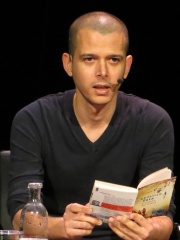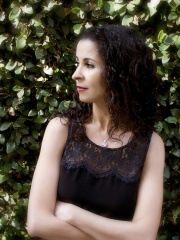
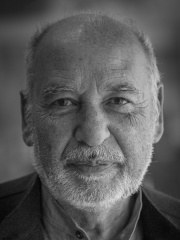
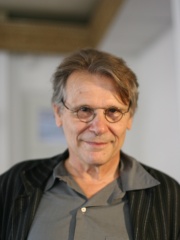
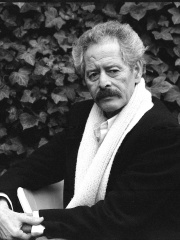

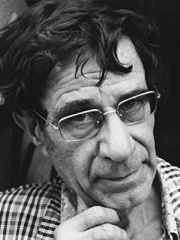
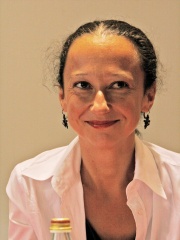
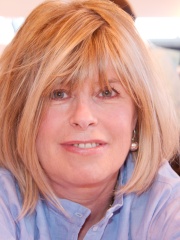
The Most Famous
WRITERS from Morocco
This page contains a list of the greatest Moroccan Writers. The pantheon dataset contains 5,755 Writers, 12 of which were born in Morocco. This makes Morocco the birth place of the 60th most number of Writers behind Lebanon and Afghanistan.
Top 10
The following people are considered by Pantheon to be the top 10 most legendary Moroccan Writers of all time. This list of famous Moroccan Writers is sorted by HPI (Historical Popularity Index), a metric that aggregates information on a biography’s online popularity. Visit the rankings page to view the entire list of Moroccan Writers.

1. Fatema Mernissi (1940 - 2015)
With an HPI of 61.66, Fatema Mernissi is the most famous Moroccan Writer. Her biography has been translated into 34 different languages on wikipedia.
Fatema Mernissi (Arabic: فاطمة مرنيسي, romanized: Fāṭima Marnīsī; 27 September 1940 – 30 November 2015) was a Moroccan feminist writer and sociologist.

2. Tahar Ben Jelloun (1944 - )
With an HPI of 59.94, Tahar Ben Jelloun is the 2nd most famous Moroccan Writer. His biography has been translated into 33 different languages.
Tahar Ben Jelloun (Arabic: الطاهر بن جلون; born in Fes, Morocco, 1 December 1944) is a Moroccan writer. All of his work is written in French although his first language is Darija. He became known for his 1985 novel L’Enfant de Sable (The Sand Child). He now lives in Paris, France, and continues to write. He has been nominated for the Nobel Prize in Literature.

3. Daniel Pennac (1944 - )
With an HPI of 58.58, Daniel Pennac is the 3rd most famous Moroccan Writer. His biography has been translated into 33 different languages.
Daniel Pennac (real name Daniel Pennacchioni, born 1 December 1944 in Casablanca, Morocco) is a French writer. He received the Prix Renaudot in 2007 for his essay Chagrin d'école. Daniel Pennacchioni is the fourth and last son of a Corsican and Provençal family. His father was a polytechnicien who became an officer of the colonial army, reaching the rank of general at retirement and his mother, a housewife, was a self-taught reader. His childhood was spent wherever his father was stationed, in Africa (Djibouti, Ethiopia, Algeria, Equatorial Africa), Southeast Asia (Indochina) and France (including La Colle-sur-Loup). His father's love for poetry gave him a taste for books that he quickly devoured in the family library or at schoolAfter studying in Nice he became a teacher. He began to write for children, including his series "La Saga Malaussène", which tells the story of Benjamin Malaussène, a scapegoat, and his family in Belleville, Paris. In a 1997 piece for Le Monde, Pennac stated that Malaussène's youngest brother, Le Petit, was the son of Jerome Charyn's New York detective, Isaac Sidel.His writing style can be humorous and imaginative as in "La Saga Malaussène", or scholarly, as exemplified by the essay "Comme un roman." His comic Débauche, written jointly with Jacques Tardi, deals with unemployment.

4. Mohamed Choukri (1935 - 2003)
With an HPI of 54.98, Mohamed Choukri is the 4th most famous Moroccan Writer. His biography has been translated into 20 different languages.
Mohamed Choukri (Arabic: محمد شكري, Berber: ⵎⵓⵃⴰⵎⵎⴻⴷ ⵛⵓⴽⵔⵉ) (15 July 1935 – 15 November 2003) was a Moroccan author and novelist who is best known for his internationally acclaimed autobiography For Bread Alone (al-Khubz al-Hafi), which was described by the American playwright Tennessee Williams as "a true document of human desperation, shattering in its impact". Choukri was born in 1935 in Ayt Chiker (Ayt Chiker, hence his adopted family name: Choukri / Chikri), a small village in the Rif mountains in the Nador province, Morocco. He was raised in a very poor family. He ran away from his tyrannical father and became a homeless child living in the poor neighbourhoods of Tangier, surrounded by misery, prostitution, violence and drug abuse. At the age of 20, he decided to learn how to read and write and later became a schoolteacher. His family name Choukri is connected to the name Ayt Chiker which is the Berber tribe cluster he belonged to before fleeing hunger to Tangier. It is most likely that he adopted this name later in Tangier because in the rural Rif family names were rarely registered. In the 1960s, in the cosmopolitan Tangier, he met Paul Bowles, Jean Genet and Tennessee Williams. Choukri's first writing was published in Al Adab (monthly review of Beirut) in 1966, a story entitled "Al-Unf ala al-shati" ("Violence on the Beach"). International success came with the English translation of Al-khoubz Al-Hafi (For Bread Alone, Telegram Books) by Paul Bowles in 1973. The book was translated into French by Tahar Ben Jelloun in 1980 (Éditions Maspero), published in Arabic in 1982 and censored in Morocco from 1983 to 2000. The book was later translated into 30 languages. His main works are his autobiographical trilogy, beginning with For Bread Alone, followed by Zaman Al-Akhtaâ aw Al-Shouttar (Time of Mistakes or Streetwise, Telegram Books) and finally Faces. He also wrote collections of short stories in the 1960s/1970s (Majnoun Al-Ward, The Flower Freak, 1980; Al-Khaima, The Tent, 1985). Likewise, he is known for his accounts of his encounters with the writers Paul Bowles, Jean Genet and Tennessee Williams (Jean Genet and Tennessee Williams in Tangier, 1992, Jean Genet in Tangier, 1993, Jean Genet, Suite and End, 1996, Paul Bowles: Le Reclus de Tanger, 1997). See also In Tangier, Telegram Books, 2008, for all three in one volume. Choukri died of cancer on 15 November 2003 at the military hospital of Rabat. He was buried on 17 November at the Marshan cemetery in Tangier, with the audience of the minister of culture, numerous government officials, personalities and the spokesman of the king of Morocco. Before he died, Choukri created a foundation, Mohamed Choukri (president, Mohamed Achaâri), owning his copyrights, his manuscripts and personal writings. Before his death, he provided for his servant of almost 22 years.

5. Dunash ben Labrat (920 - 990)
With an HPI of 51.85, Dunash ben Labrat is the 5th most famous Moroccan Writer. His biography has been translated into 16 different languages.
Dunash ha-Levi ben Labrat (920/925 – after 985) (Hebrew: ר׳ דוֹנָש הַלֵּוִי בֵּן לָבְּרָט; Arabic: دناش بن لبراط) was a medieval Jewish commentator, poet, and grammarian of the Golden age of Jewish culture in Spain. He is known for his philological commentary, Teshuvot Dunash, and for his liturgical poems D'ror Yiqra and D'vai Haser.

6. Ahmed Rami (1946 - )
With an HPI of 50.05, Ahmed Rami is the 6th most famous Moroccan Writer. His biography has been translated into 17 different languages.
Ahmed Rami (Arabic: أحمد رامي; born 12 December 1946) is a Moroccan-Swedish writer, political activist, coup d'etat participant, military officer and Holocaust denier. He gained attention as the founder of the radio station Radio Islam, which now functions as a website.

7. Driss Chraïbi (1926 - 2007)
With an HPI of 49.79, Driss Chraïbi is the 7th most famous Moroccan Writer. His biography has been translated into 21 different languages.
Driss Chraïbi (Arabic: إدريس الشرايبي; July 15, 1926 – April 1, 2007) was a Moroccan author whose novels deal with colonialism, culture clashes, generational conflict and the treatment of women and are often perceived as semi-autobiographical. Born in El Jadida and educated in Casablanca, Chraïbi went to Paris in 1945 to study chemistry before turning to literature and journalism. His works have been translated into English, Arabic, Italian, German and Russian. He viewed himself as an anarchist, writing on issues such as immigration, patriarchy and the relation between the west and the Arab world

8. Muriel Barbery (1969 - )
With an HPI of 46.41, Muriel Barbery is the 8th most famous Moroccan Writer. Her biography has been translated into 26 different languages.
Muriel Barbery (born 28 May 1969) is a French novelist and philosophy teacher. Her 2006 novel The Elegance of the Hedgehog quickly sold more than a million copies in several countries.

9. Katherine Pancol (1954 - )
With an HPI of 43.50, Katherine Pancol is the 9th most famous Moroccan Writer. Her biography has been translated into 17 different languages.
Katherine Pancol (born 22 October 1954) is a French journalist and novelist. Her books have been translated into some 30 languages, and sold millions of copies worldwide. In the United States, she is known as the author of The Yellow Eyes of Crocodiles (Penguin, 2013) and its sequel, The Slow Waltz of Turtles (Penguin, 2016), both translated by William Rodarmor.
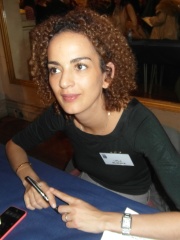
10. Leïla Slimani (1981 - )
With an HPI of 41.17, Leïla Slimani is the 10th most famous Moroccan Writer. Her biography has been translated into 28 different languages.
Leïla Slimani (born 3 October 1981) is a Franco-Moroccan writer and journalist. She is also a French diplomat in her capacity as the personal representative of the French president Emmanuel Macron to the Organisation internationale de la Francophonie. In 2016, she was awarded the Prix Goncourt for her novel Chanson douce.
Pantheon has 12 people classified as writers born between 920 and 1981. Of these 12, 8 (66.67%) of them are still alive today. The most famous living writers include Tahar Ben Jelloun, Daniel Pennac, and Ahmed Rami. The most famous deceased writers include Fatema Mernissi, Mohamed Choukri, and Dunash ben Labrat. As of April 2022, 3 new writers have been added to Pantheon including Dunash ben Labrat, Abdellah Taïa, and Laila Lalami.
Living Writers
Go to all Rankings
Tahar Ben Jelloun
1944 - Present
HPI: 59.94
Daniel Pennac
1944 - Present
HPI: 58.58
Ahmed Rami
1946 - Present
HPI: 50.05
Muriel Barbery
1969 - Present
HPI: 46.41
Katherine Pancol
1954 - Present
HPI: 43.50
Leïla Slimani
1981 - Present
HPI: 41.17
Abdellah Taïa
1973 - Present
HPI: 35.50
Laila Lalami
1968 - Present
HPI: 33.23

Deceased Writers
Go to all Rankings
Fatema Mernissi
1940 - 2015
HPI: 61.66
Mohamed Choukri
1935 - 2003
HPI: 54.98
Dunash ben Labrat
920 - 990
HPI: 51.85
Driss Chraïbi
1926 - 2007
HPI: 49.79

Newly Added Writers (2022)
Go to all Rankings
Dunash ben Labrat
920 - 990
HPI: 51.85
Abdellah Taïa
1973 - Present
HPI: 35.50
Laila Lalami
1968 - Present
HPI: 33.23

Which Writers were alive at the same time? This visualization shows the lifespans of the 3 most globally memorable Writers since 1700.

